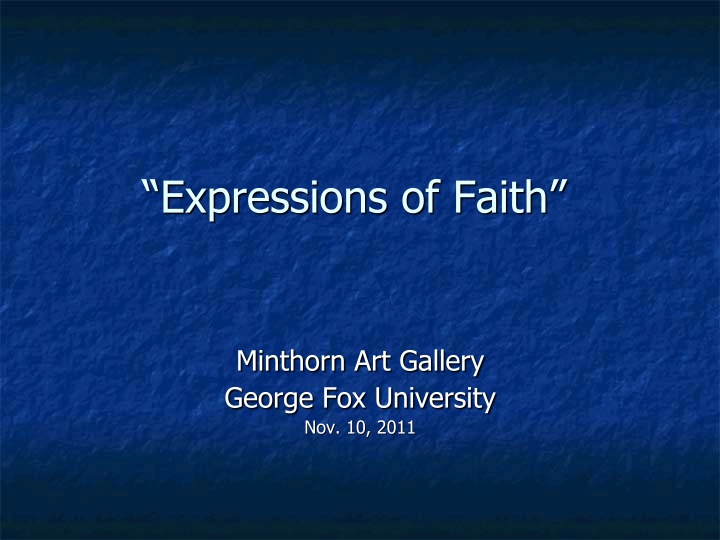 |
[While this slide was up, I read my opening remarks.] |
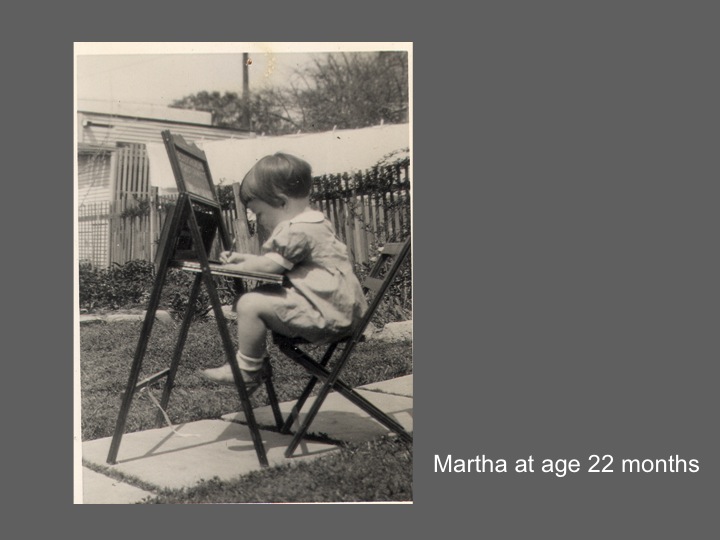 |
A three slide bio: I always did art, from age 22 months to today. |
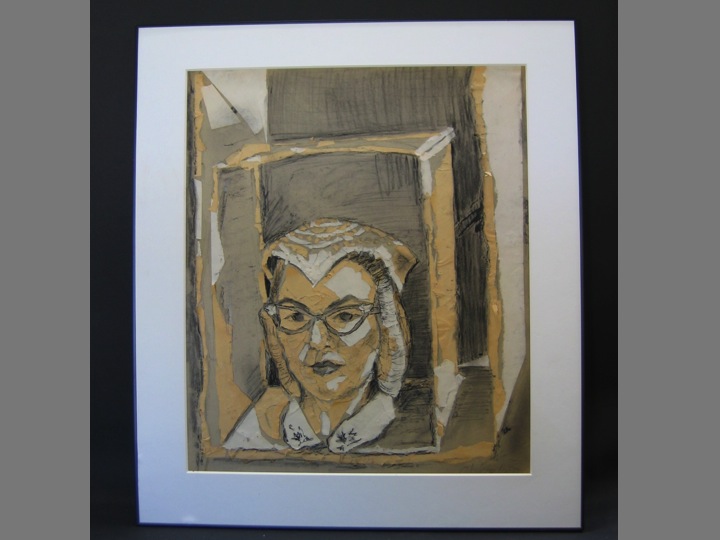 |
In high school I did a self portrait with torn paper, which would turn out to be prophetic, since I later used paper as my primary medium of expression. |
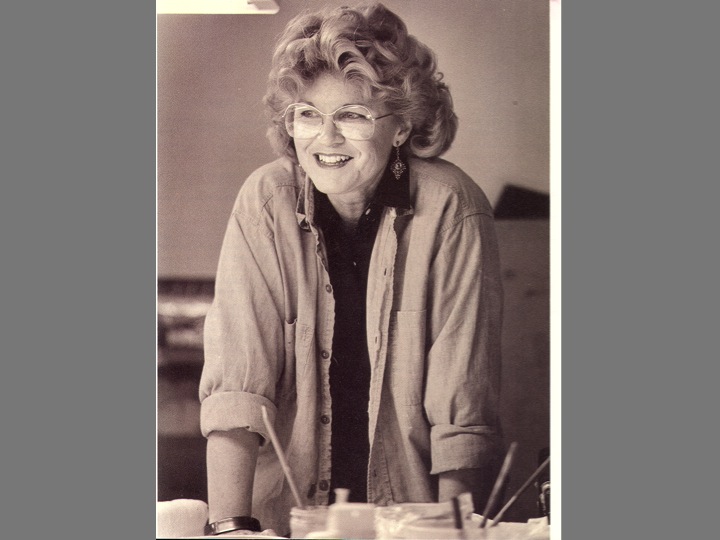 |
In my 40s I took papermaking classes, began exploring the medium of paper, and rented my own studio space. |
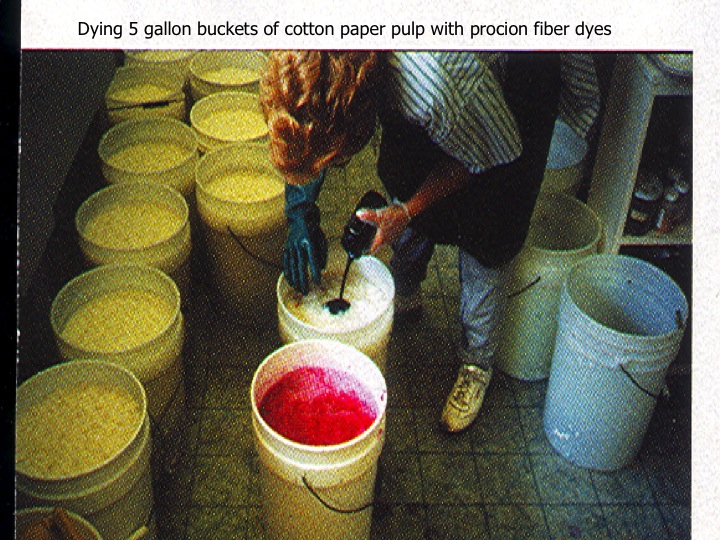 |
I built a hydropulper, a machine that turned cotton and abaca fibers into pulp, which you see here in buckets. I dyed some of the wet pulp with fiber dyes. |
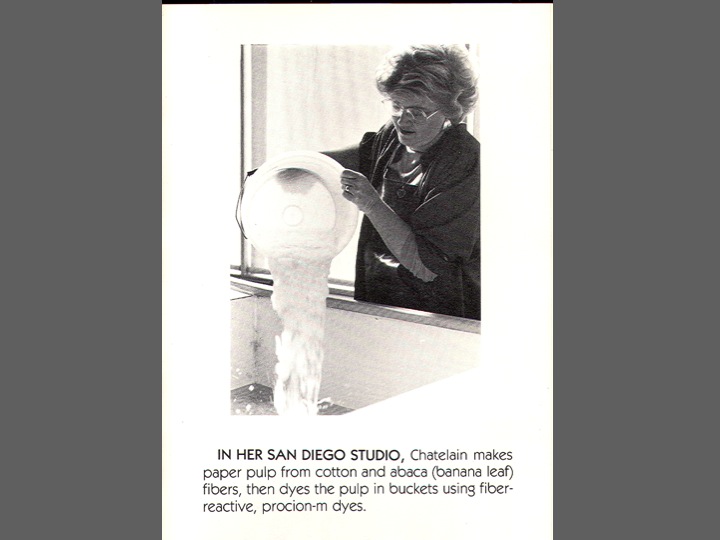 |
I made all the paper in the pieces you're about to see, in two different ways. Here I'm pouring the pulp into a vat, where I made thin sheets of paper the traditional way, pulling individual sheets on a framed screen, then pressing them and drying them on a rack. |
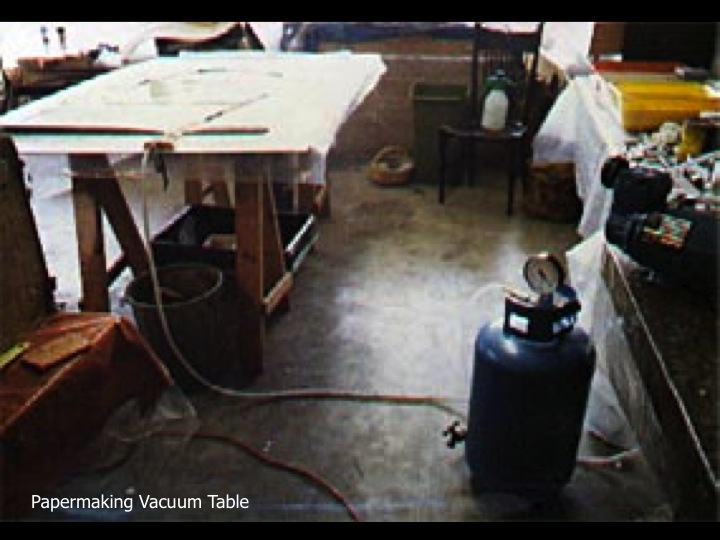 |
I also designed and had built a vacuum table. At 4' x 8', with a raised edge, mine was larger than the one shown here. It enabled me to make larger and thicker sheets, which could then be draped and sculpted while still wet and dried by blowing fans on them. |
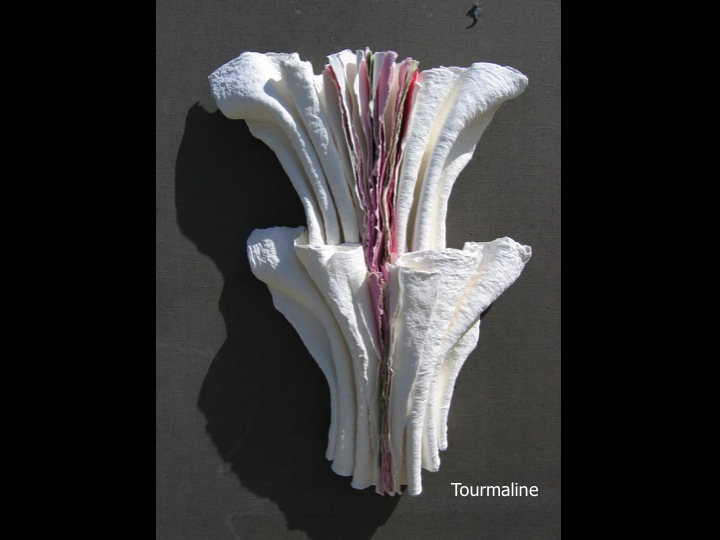 |
This piece combines the draped paper - the white sheets - with the thinner single sheets in the center. |
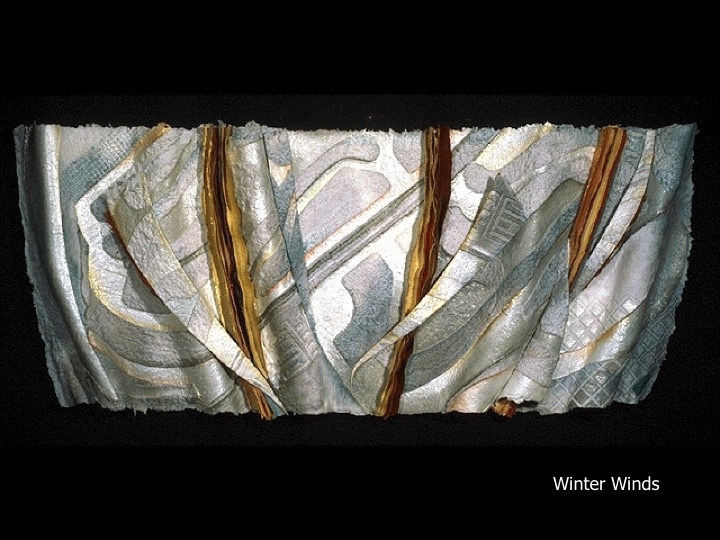 |
I gradually began to work larger, incorporating thin sheets of copper and painting accents with iridescent acrylic paints. |
 |
The graduated color comes from dyed pulp of different colors poured next to the white pulp, blending freely as the vacuum pump sucks out the water. |
 |
I added texture by placing found plastic or other objects on top of the thick wet pulp before sealing the surface of the vacuum table with plastic sheeting. |
 |
The action of the vacuum pump sucking the water out reverse embossed these textures on the surface of the paper. Then I used paint to accent them. [Detail of the piece shown in the previous slide.] |
 |
I got so into paper that I was one of the US delegates who attended an International Paper Conference in Kyoto, Japan, and then visited paper making villages throughout the country. |
 |
That trip influenced my later work and led to my having a show at Gallery Beni in Kyoto. My Japanese friends and contacts led to selling my work to Japanese corporations and collectors. |
 |
This work was inspired by a trip to Arizona's Mesa Verde with its cliff dwellings. |
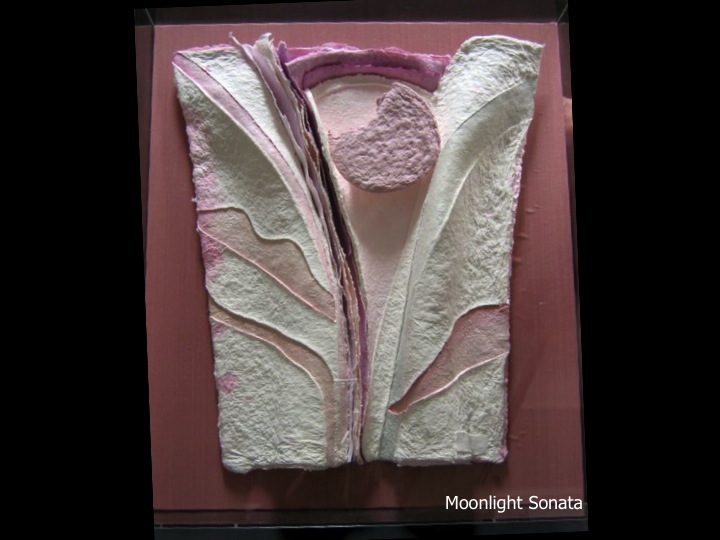 |
Music also inspires my work. |
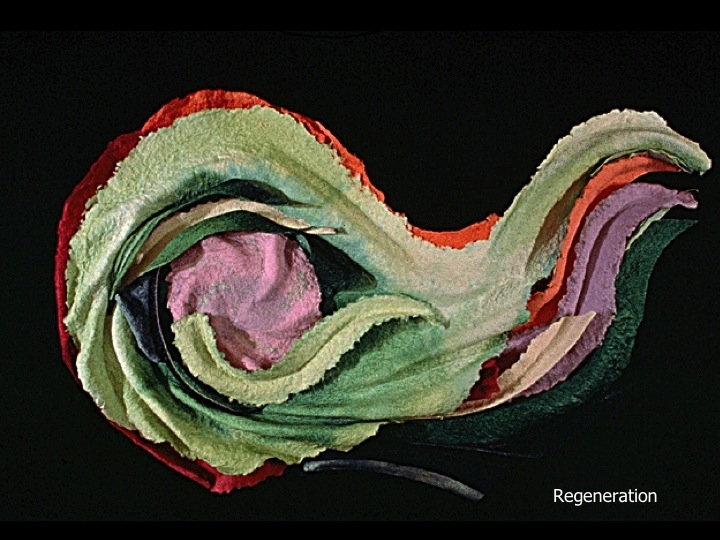 |
Shapes in nature are another inspiration. |
 |
This is the largest single piece I have done. I made it in three sections so it could be re-assembled when it got to New York. [I have also done a few multi-story works but they have had multiple separate pieces.] |
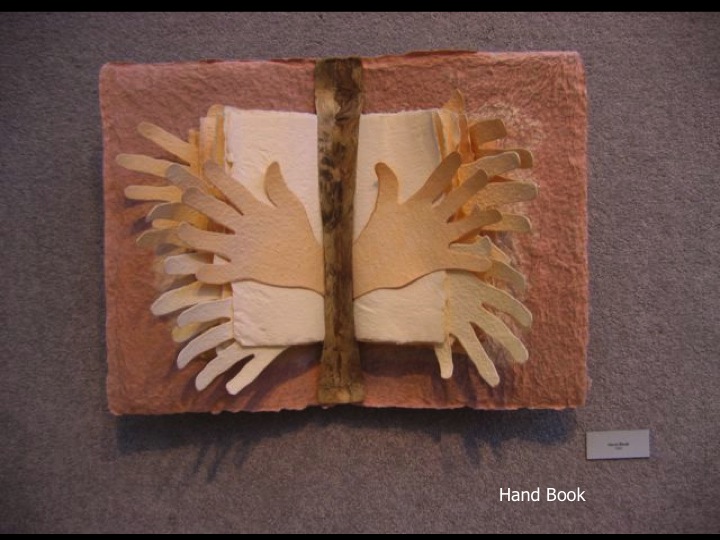 |
And I have also done a number of book themed pieces. |
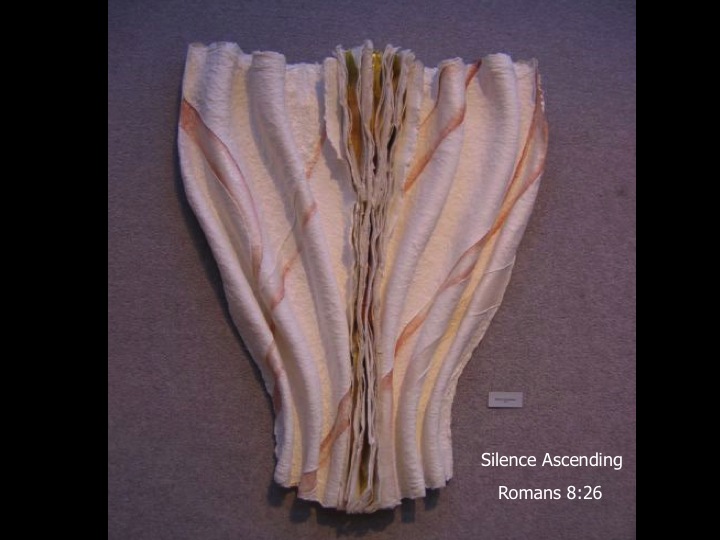 |
One Advent, San Diego's Episcopal Cathedral exhibited 36 of my pieces in the sanctuary and the chapel, each of which had a scripture reference. The scripture for "Silence Ascending" was Romans 8:26: "We do not know how to pray as we ought, but the Spirit himself intercedes for us with sighs too deep for words." |
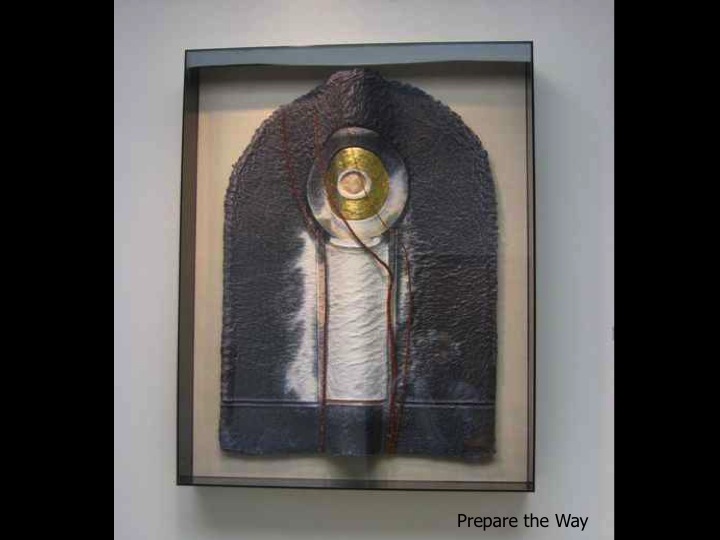 |
"Prepare the Way" is part of this current show. It incorporates gold leaf and twigs and is encased in a Plexiglas box frame. |
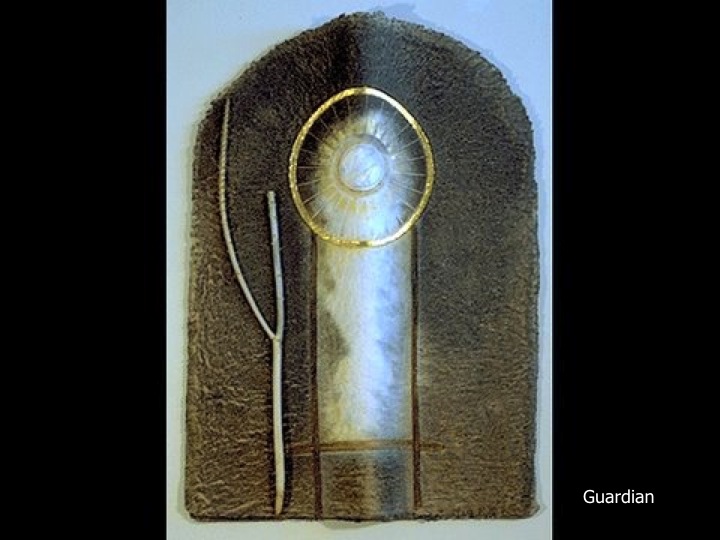 |
"Guardian" is the other piece of mine in this show. Because the cotton fiber paper is archival, and has been sealed with a transparent acrylic surface, it is OK to have it unframed. |
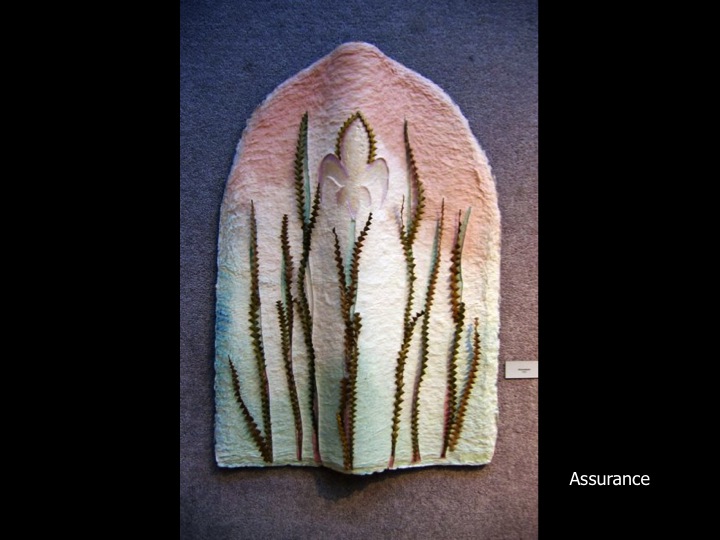 |
Here are two more of my works in a shield like shape. |
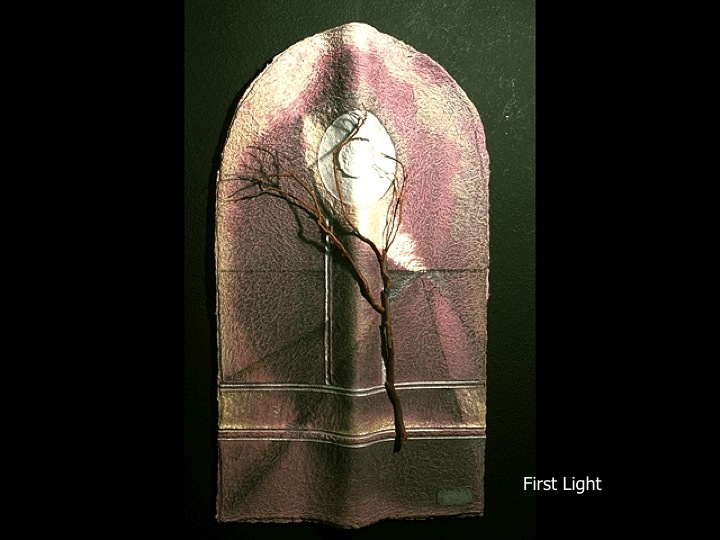 |
|
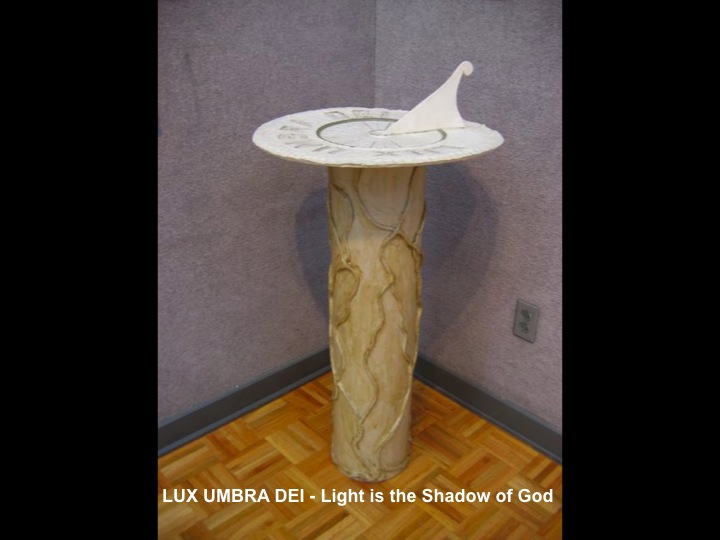 |
The theme of the San Diego cathedral show came from an inscription on an English sun dial, LUX UMBRA DEI, which means, "Light is the shadow of God." |
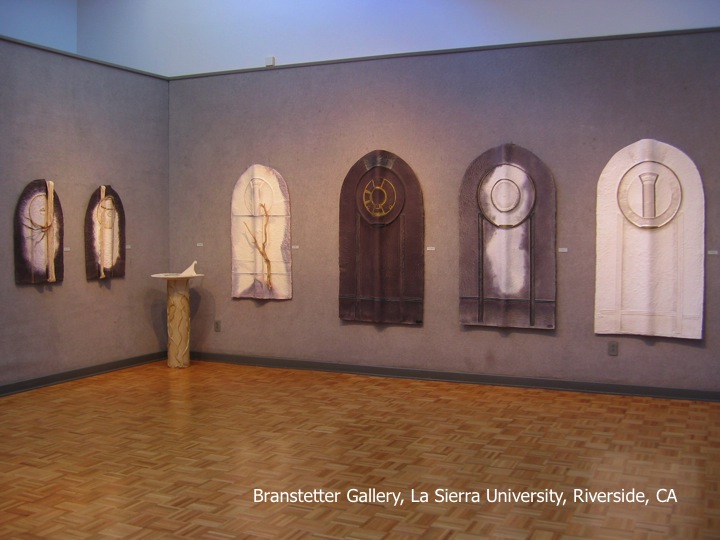 |
Here's the sundial as part of a show in 2005. The three large shields on the right were created for a show whose theme was "Boundaries". At the time my husband and I were living with and taking care of my parents, and my father was on hospice care. My father was a strong Christian, and I was thinking of the boundaries between this life and the life eternal. |
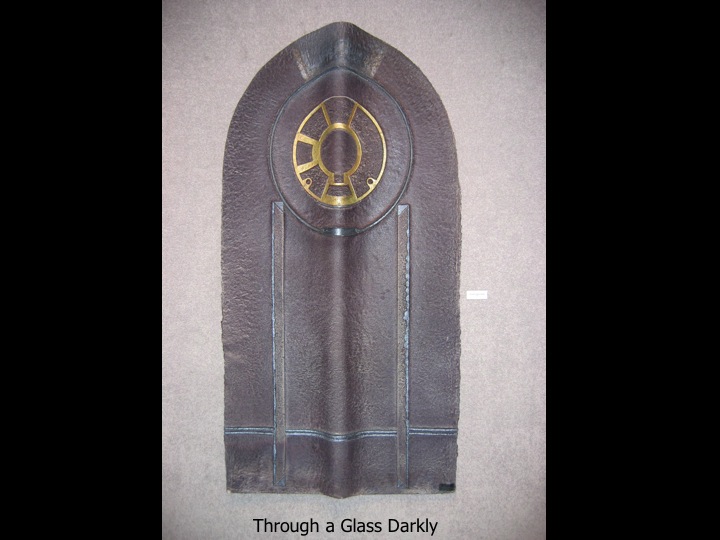 |
These three shields are a series. In the first, "Now we see as through a glass, darkly, then we shall see face to face." (1 Corinthians 13:12) |
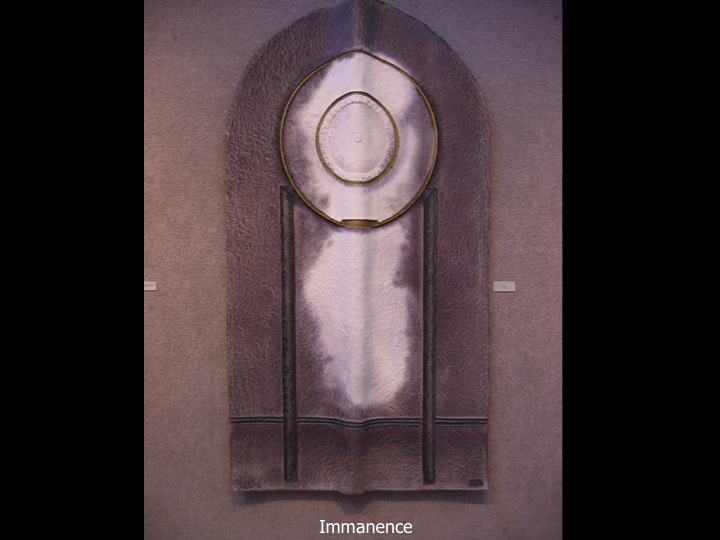 |
The second is "Immanence" with the white coming from the center; the dark cannot overcome it. |
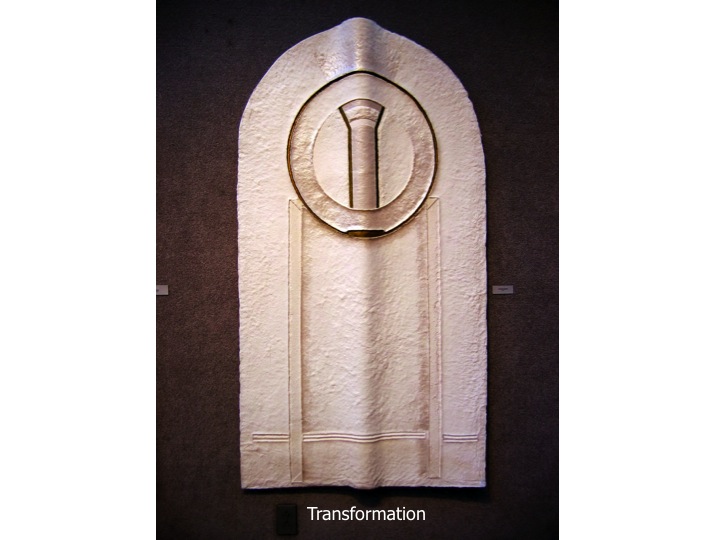 |
The third is "Transformation" with gold leaf and white pearlescent paint. When we moved to Portland, we began attending First Covenant Church. When the minister came to visit our home, he saw my artwork and sent the Minister of Arts and Worship to see it. They decided to use these three pieces during the coming season of Advent. Its theme was the gospel of John and they wanted the sculptures to reflect how Jesus, the Light, came into the world and the darkness could not overcome it. |
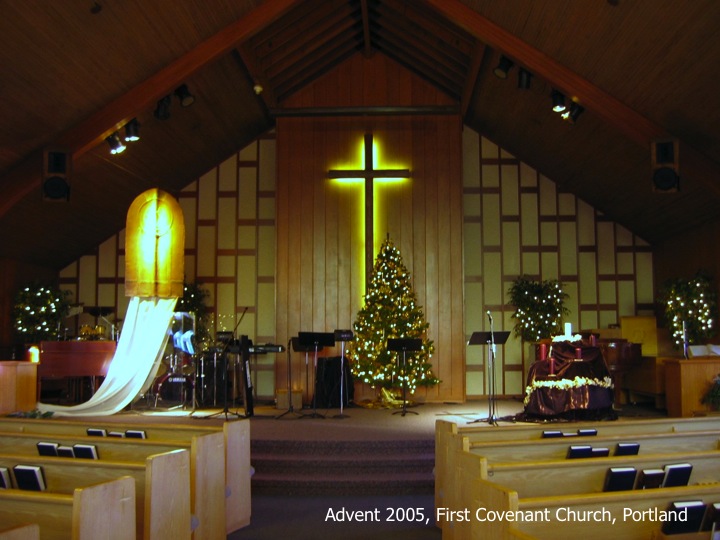 |
The first Sunday of Advent they hung the Dark one to the left. (In this picture, because of the spotlight, it doesn't appear as dark as it is.) |
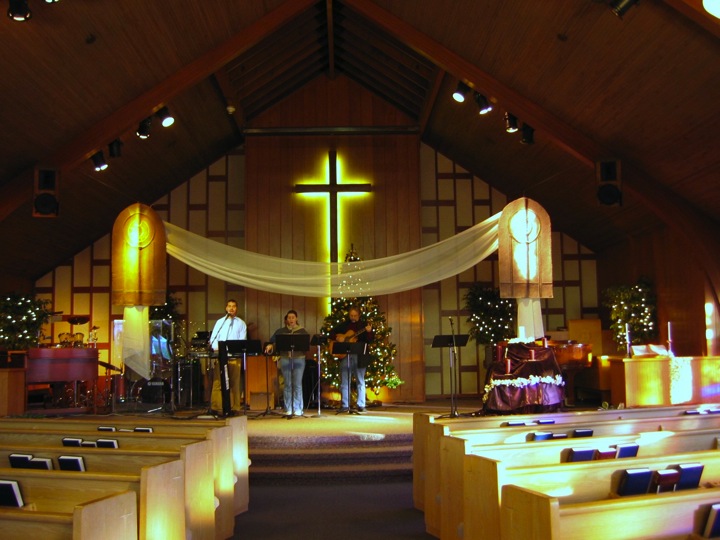 |
The second week Immanence was hung to the right. |
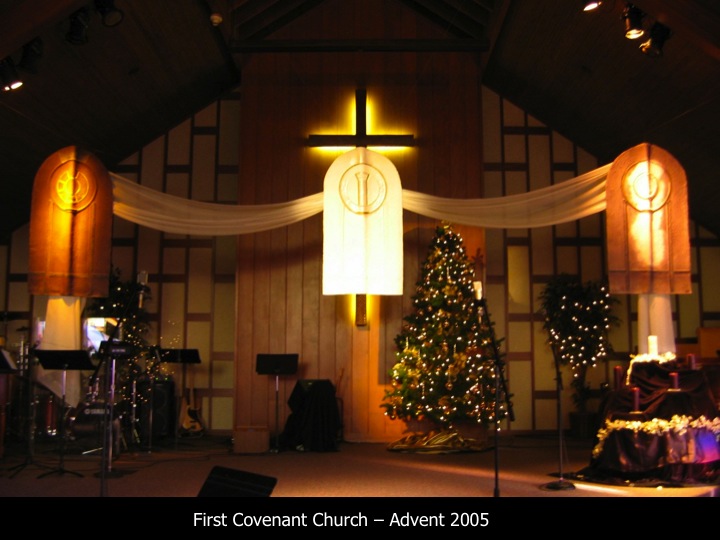 |
The third Sunday, and for Christmas Eve, Transformation was hung in the middle. |
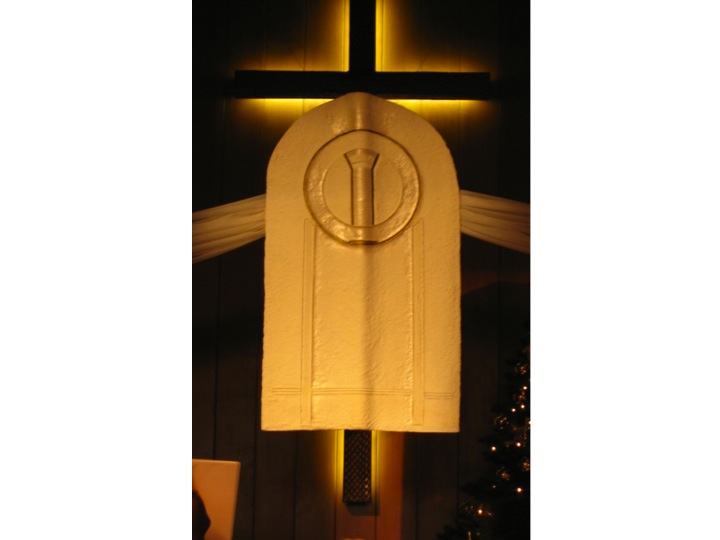 |
A close up of Transformation. |
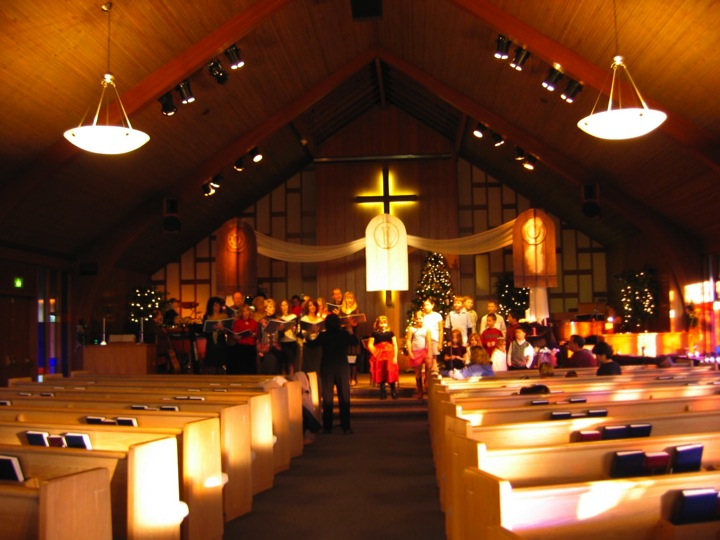 |
Here is a rehearsal of the children's choir. Following that Advent, our church formed a group of people, the Arts in Worship team, who present art all during the year, created to enhance worship. |
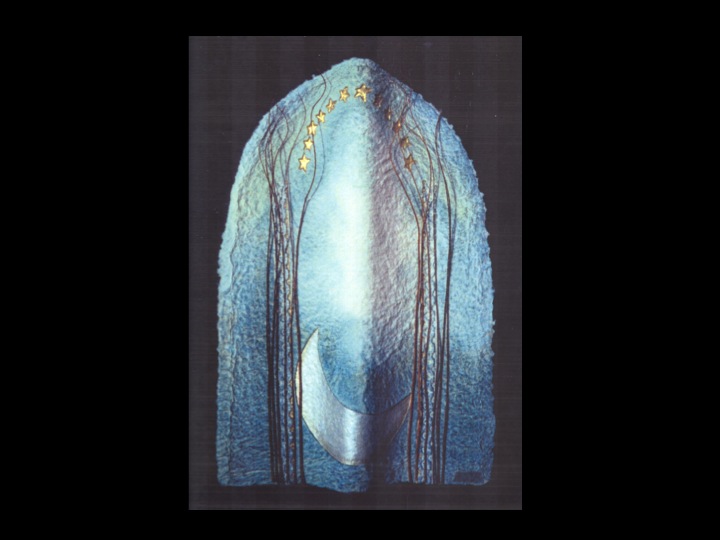 |
Another Advent the theme was "Advent Through The Eyes of Mary". I had done this Mary-themed piece, but I had already sold it. |
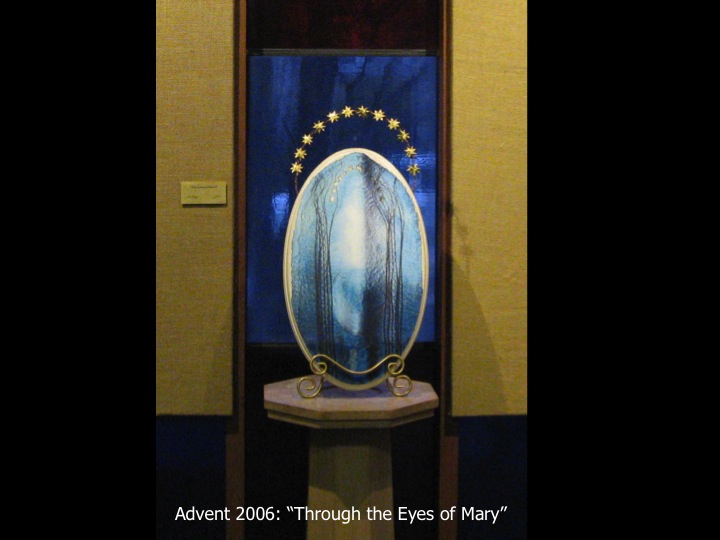 |
So I used a photo of it and created this version for display. |
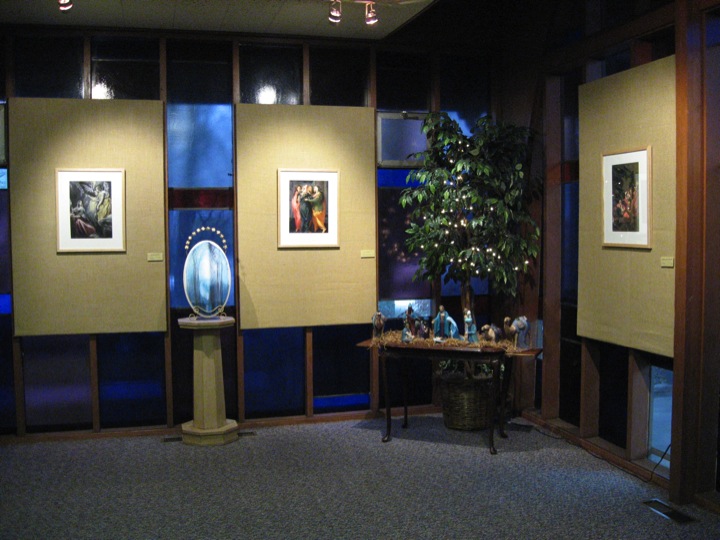 |
As you can see our only display space was a 15 foot corner in the narthex. We put up burlap panels so we could hang art there. The entry and the area were cramped. When the church formed an architecture and design committee to expand the lobby and create a more welcoming entry... |
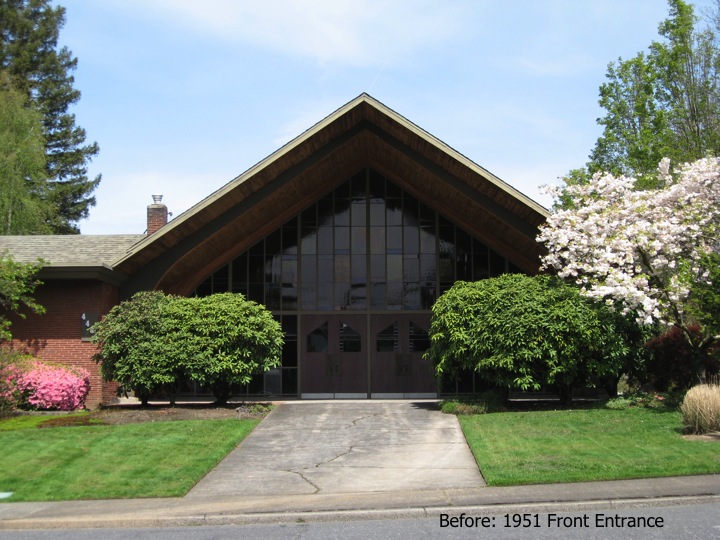 |
I jumped at the chance to participate. This is what the entry to the church looked like before we began construction. |
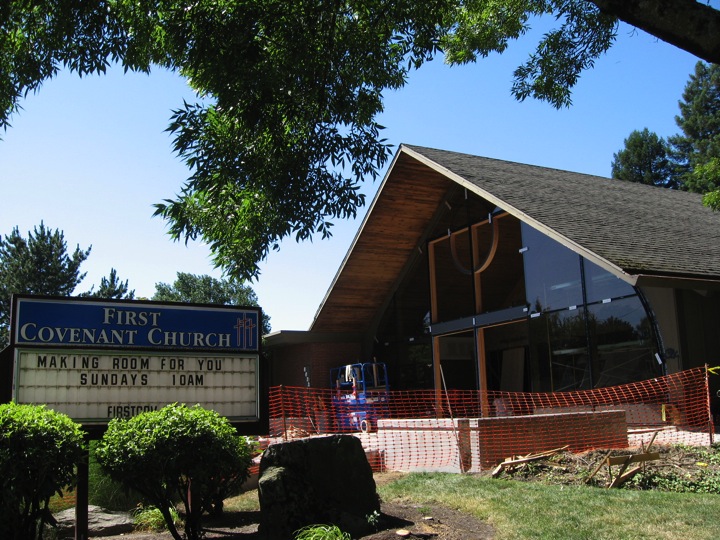 |
We moved the front wall out another 15 feet, and made it transparent, with a cross made of wood beams enclosed in a circle, which has now become our logo. |
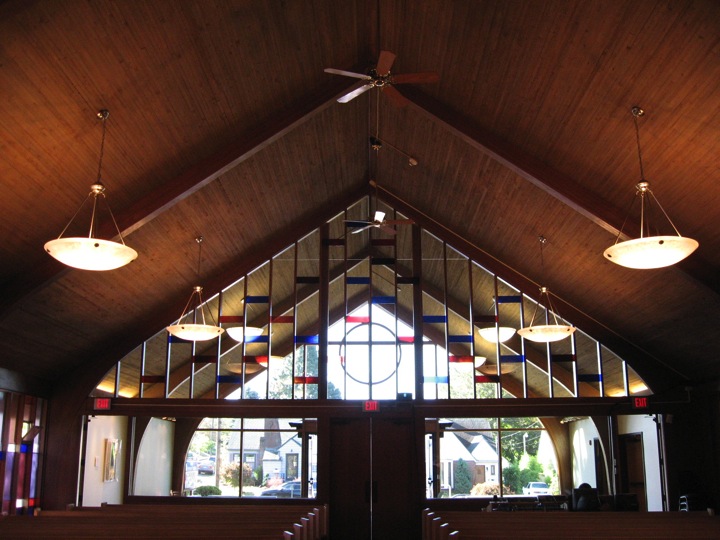 |
We "harvested" (salvaged) 34 pieces of stained glass from the former narthex walls, and put them into the wall between the narthex and the sanctuary. One piece broke during installation, so we now have one piece of glass for each of the 33 years of Jesus' time on earth. Note the white walls through the glass on the left - we now have 30 feet of display space. |
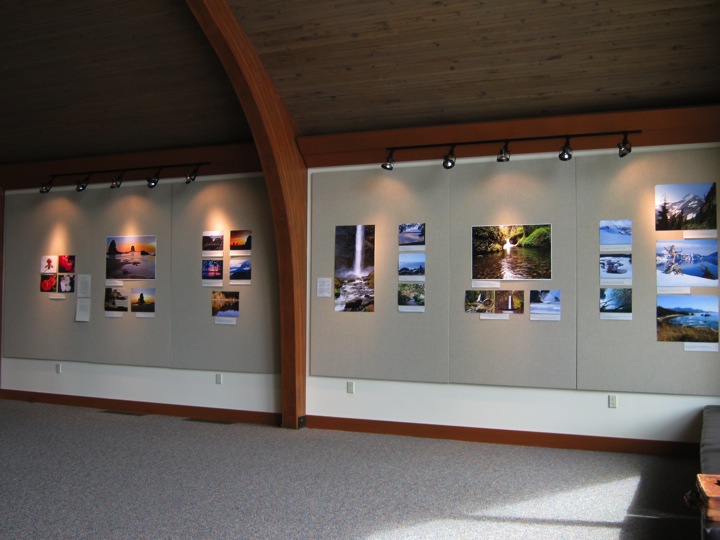 |
Here is our current exhibition of landscape photographs by one of our members, each with a verse of scripture. |
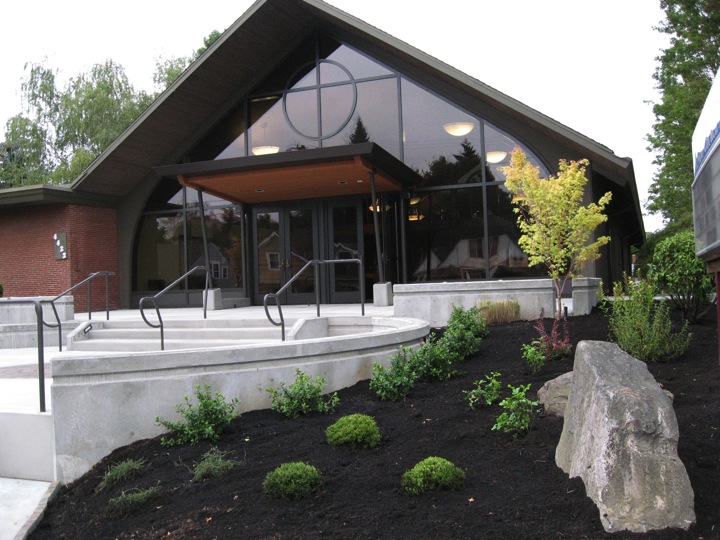 |
And here is the front of the church just after landscaping, in Southeast Portland, at the corner of 45th and Burnside. I found, through this design and construction experience, that my artistic sensibilities can be used in ways other than just doing individual work, as part of a team where we're all expressing our faith together. |
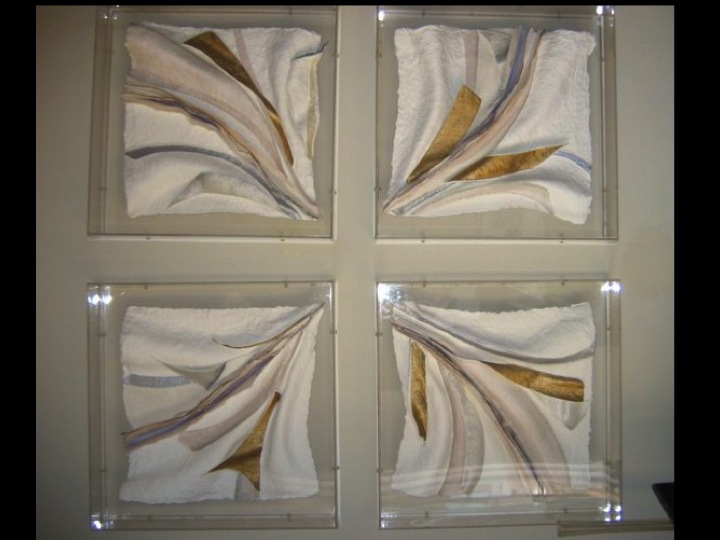 |
These four related pieces, Echo 1 2 3 and 4, inspired my friend Darlene Lasher to write this poem. [Then I read the poem aloud.] She saw something in the piece that I had not seen myself. |
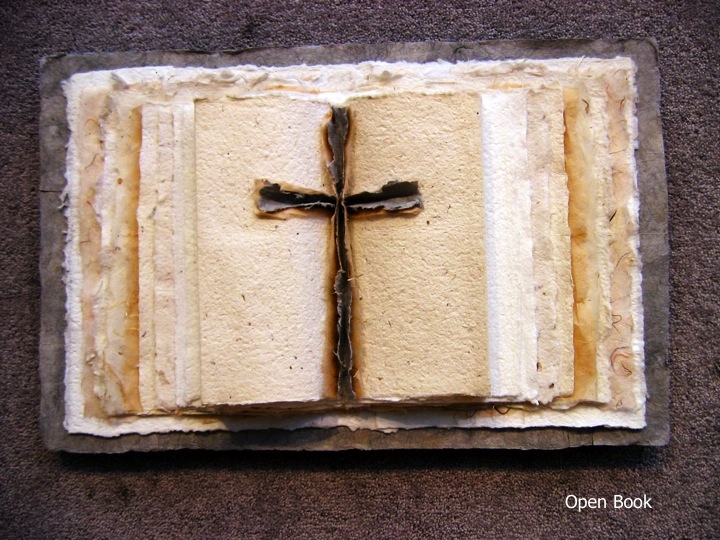 |
Open Book was included in a CD of artwork by CIVA members designed for use in churches. CIVA also included short essays with each piece. I will close with one paragraph from Kathrine Page's essay. |
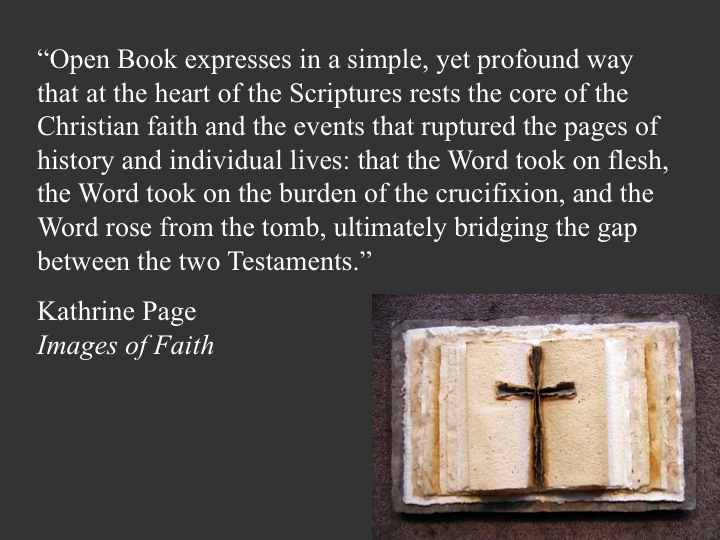 |
|